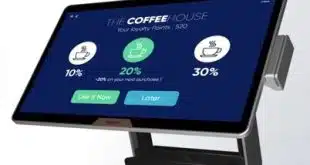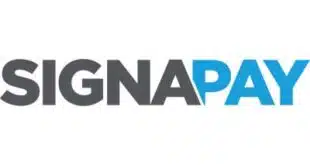Endpoint
What gives? The global payment card networks are attempting to gain closed-model benefits while remaining open.
Vertical integration and emerging players are redrawing the traditional boundaries between networks and other payments players. It can be confusing, but it will ultimately add value to the business, says Eric Grover.
Eric Grover is principal of Intrepid Ventures, Carson Valley, Nev. Reach him at eric.grover@intrepidventures.com.
Not so very long ago, roles and markets across the retail payment card value chain were well-defined and separate. Bank-owned, open, two-sided payment networks were at the center of the system. Banks delivered payment products to end users.
Closed-loop systems such as American Express Co. and Discover Financial Services controlled relationships, processing, and economics from cardholder to merchant. Traditional card-based commerce at the physical point of sale and in the nascent e-commerce market were distinct, and hardware and software specialists stuck to their knitting.
Roles and markets, however, are blurring as payments firms venture across traditional boundaries, vertically integrating to enhance their value propositions and capture more transaction economics. At the same time, non-traditional entrants are redefining traditional roles.
Classic payment card networks like AmEx, Discover, First Data Corp.’s Star, MasterCard Inc., and Visa Inc., which all use a piece of plastic to hold account keys, and alternative networks such as PayPal, which for the moment operate principally on the Internet, were once viewed as different species.
That distinction, though, was always artificial and likely to break down. Now Congress has hammered the point home. Section 1075 (also known as the Durbin Amendment) of the Dodd-Frank Wall Street Reform And Consumer Protection Act expansively defines payment card networks, I would argue encompassing PayPal.
Mass Matters
All major U.S. retail electronic payment systems are now bank-independent commercial enterprises. Open networks are purposefully pushing beyond the historic network edge and closed networks are opening up.
Closed networks enjoy advantages. They capture revenue and control processing and data from end to end, and can therefore more easily target market and manage risk.
Notwithstanding these advantages, the open model has proved stronger. In 1982 proprietary payment card volume was 50% greater than Visa, MasterCard, and AmEx volume combined. Visa, MasterCard, and AmEx were roughly the same size with $32.5 billion, $27.9 billion, and $25.8 billion in U.S. payment volume respectively. In 2009, proprietary store cards were 3.8% of total AmEx, Discover, MasterCard, and Visa U.S. payments volume.
Mindful that network mass matters, AmEx, Discover, and PayPal are opening up to boost reach. Because of its higher interchange and cardholder spend, AmEx has enjoyed more success with third-party issuance. On the acceptance front, a more aggressive Discover is close to acceptance parity with Visa, having outsourced most U.S. acceptance to the acquiring and processing industry. For growth, PayPal partnered with Bling Nation, Fidelity National Information Services, and First Data’s Star.
Prior to its initial public offering in 2008, Visa rarely employed M&A. Since then, however, it has forged several acquisitions, investments, and joint ventures, extending its processing footprint on both sides of the network. Visa’s $2 billion acquisition of gateway and acquirer Cybersource Corp. was the largest where a network was a buyer or acquisition since First Data’s $6.6 billion acquisition in 2004 of Concord EFS (Star), which was America’s leading PIN-debit network. The CyberSource valuation was a rich 11.3 times 2009 revenue.
Visa has also bought gaming payments firm PlaySpan for $190 million, launched joint ventures with Yalamanchili for card processing and with Elavon and the State Bank of India for acquiring, and upped its stake in mobile-payment processor Monitise to 14.4%. Visa’s foray into e-wallets, too, is outside its usual role, touching cardholders real-time at the POS.
Similarly, MasterCard bought European gateway processor DataCash Group for $526 million—a heady nine times 2009 revenue. It partnered with CSC and ACI Worldwide for card issuer and merchant processing, took a 12.5% stake in Indian processor Electracard, and picked up Travelex’s prepaid operations.
So Visa is now an acquirer and e-wallet manager. MasterCard is a prepaid program operator. And both are merchant, gateway, and card-issuer processors, potentially trespassing on their licensees’ turf.
What gives? The global payment card networks are attempting to gain closed-model benefits while remaining open.
Distinctions between the spend and acceptance sides of the network are becoming less meaningful. Mobile phones are used to make and accept payments. Acquirers and independent sales organizations continue to extend acceptance to ever smaller merchants. And networks’ person-to-person services, when fully deployed across their worldwide contractual webs, will put several billion cardholders on both sides of the network.
At the POS, the mag-stripe terminal’s death knell has not yet been sounded. Nonetheless real-time location technology, along with merchant- and consumer-aware applications, herald a sea change. With IP connections, thin clients, a raft of applications in the cloud, and smart phones holding account keys, the distinction between online, mobile, and traditional physical POS transacting is blurring.
Elsewhere, businesses struggling for relevance and sustainable growth and margins are invading adjacent markets, triggering skirmishes along the frontier between POS terminal suppliers and upstream merchant acquirers and processors.
Selling standardized hardware to large, sophisticated buyers is a commodity business. Consequently, while the largest providers Ingenico and VeriFone Systems Inc. have gobbled up competitors, they are vigorously attempting to diversify and capture ongoing transaction revenue.
While terminal suppliers are marching upstream, merchant processors are encroaching on their turf. Processing behemoth First Data pushes proprietary POS terminals to generate revenue and increase merchant-switching costs. Heartland Payment Systems has its own terminals and end-to-end encryption system. Heartland and VeriFone sued each other over the economics associated with maintenance and transactions on VeriFone terminals at Heartland merchants.
Jostling between firms across different stages of the payments value chain may be messy, but ultimately promises richer value for consumers and merchants.






